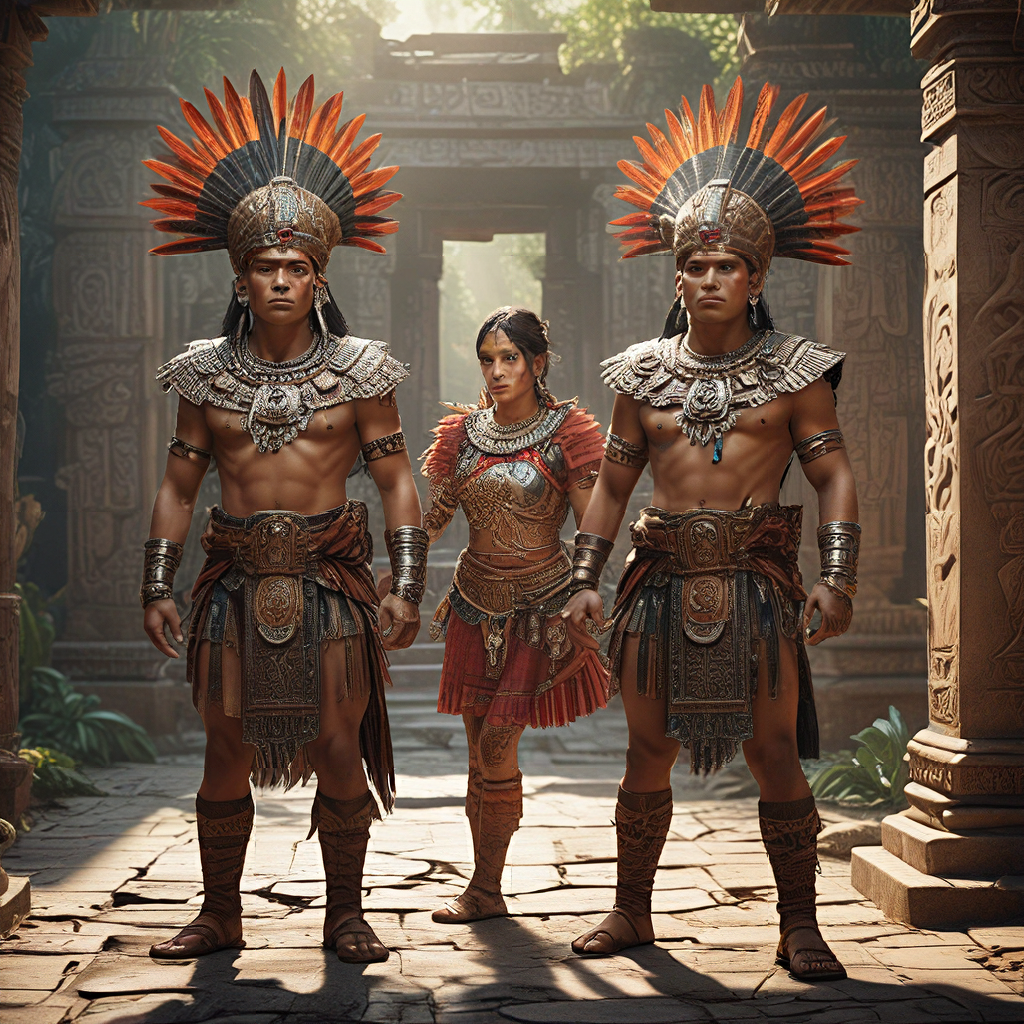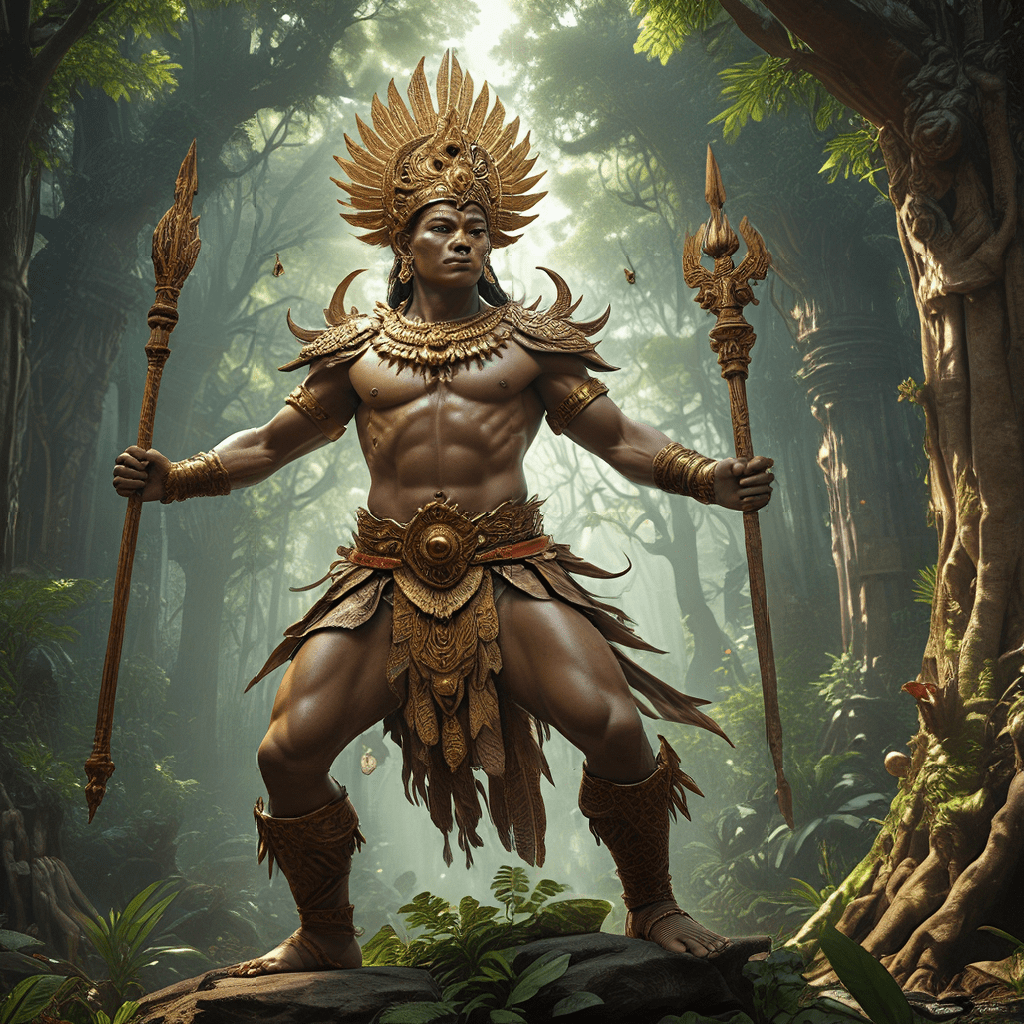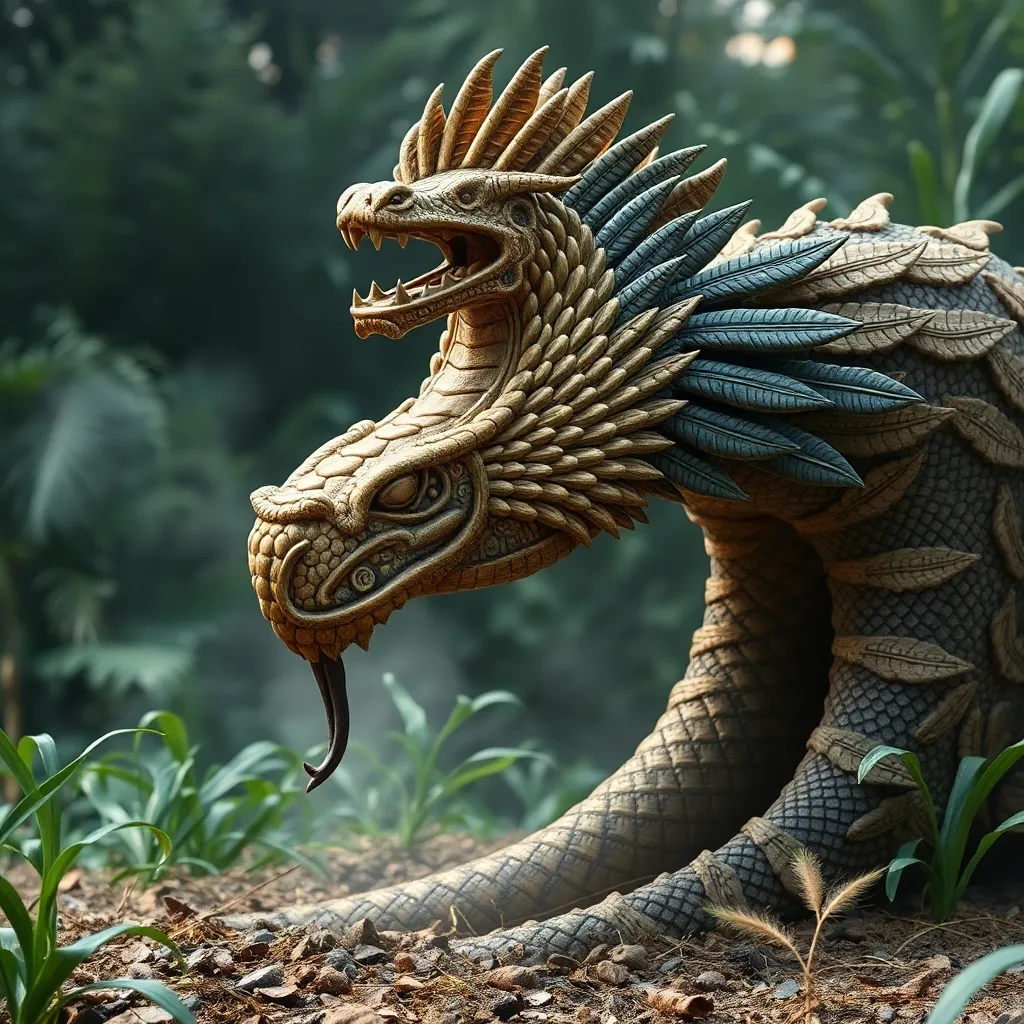The Myth of the Aztec Hero Twins
The myth of the Aztec Hero Twins is a foundational story in Aztec culture, offering profound insights into their worldview, societal structure, and spiritual beliefs. Told across generations through oral traditions, the tale of the twins, known as Nahui Ollin (Four Movement) and Cipactli (Monster), narrates a cosmic journey filled with battles, sacrifices, and ultimately, a journey into the underworld, shaping the very fabric of existence. This narrative explores themes of creation, sacrifice, duality, and the cyclical nature of life and death, making it a captivating and enduring piece of mythology.
The Birth of the Twins and the First Battle
The story begins with the birth of the twins, born to a mortal woman named Coatlicue (She of the Serpent Skirt), but fathered by the sun god Tonatiuh. However, their birth was met with fierce opposition from their elder siblings, Centzon Totochtin (Four Hundred Rabbits), who feared they would usurp their power and inheritance. The ensuing battle was brutal, with the elder siblings forming a formidable force. Though the twins were valiant and powerful, they were ultimately defeated and killed.
The Journey of the Twins: Trials and Triumphs
However, the story doesn't end there. The twins were resurrected by the gods, and their journey continued. Now imbued with supernatural powers, they faced numerous trials and challenges, proving their bravery and cunning, ultimately emerging victorious. The twins became powerful warriors who challenged the established order, even daring to confront the gods themselves. Their adventures are filled with mythical beings, magical objects, and epic battles, showcasing the complexities of Aztec belief systems.
The Twins and the Underworld: Xolotl and The Land of the Dead
One of the most significant events in the twins' journey was their encounter with Xolotl, the god of death and twins, who served as their guide in the underworld. Xolotl guided them through the treacherous land of the dead, a dark and perilous realm filled with challenges and tests. Their journey through the underworld reveals the Aztec belief in a cyclical existence, where death is not an end but merely a transition into another state of being.
The Death of the Hero Twins: A Cycle of Sacrifice and Rebirth
Despite their triumphs, the twins' ultimate fate mirrored their birth – a tragic sacrifice. They were again slain, this time by the god Tezcatlipoca (Smoking Mirror), who sought to consolidate his power. However, their death was not in vain. The twins' sacrifices were crucial to the Aztec understanding of the universe, ensuring the continuation of the cycle of life, death, and rebirth. Their sacrifice became a powerful symbol of the necessary balance between light and darkness, creation and destruction, life and death. This act of supreme sacrifice helped establish the cosmic order, ensuring the balance of the universe.
The Legacy of the Twins: A Model for Aztec Society and Culture
The myth of the Hero Twins wasn't just a captivating story; it served as a powerful model for Aztec society and culture. The twins' journey reflected societal values and provided moral guidelines for everyday life. Their trials and triumphs highlighted the importance of courage, resourcefulness, and resilience in the face of adversity. Their constant struggle against powerful forces mirrored the everyday challenges faced by the Aztecs, reminding them of the importance of perseverance and fighting for their beliefs.
The twins' dual nature – being both mortal and divine – reflected the Aztec understanding of human existence as a blend of the earthly and the spiritual. This duality extended to their roles as warriors and guides, symbolizing the interconnectedness of physical strength and spiritual wisdom. The twins' journey through the underworld served as a reminder of the cyclical nature of life, death, and rebirth, a core belief in Aztec culture.
The twins' story also highlighted the importance of sacrifice. Their ultimate fate, a sacrifice for the greater good, became a powerful symbol of Aztec societal roles and responsibilities. The twins' sacrifice was not viewed as a tragic end but as a necessary act to maintain balance and order in the cosmos. This act mirrored the sacrifices made by Aztec citizens in their daily lives, demonstrating their commitment to the well-being of their community and the larger cosmic order.
The Role of the Twins in Aztec Cosmology: Establishing the Order of the Universe
The myth of the Hero Twins played a crucial role in shaping Aztec cosmology, the understanding of the universe and its workings. Their actions established the order of the cosmos, creating the balance between life and death, creation and destruction, light and darkness. Their journey through the underworld and their final sacrifice solidified the connection between the earthly and the spiritual, establishing a cyclical existence where death wasn't the end but a transition to another realm.
The twins' victories over various supernatural beings represented the Aztec belief in the power of human will and the potential to overcome challenges. Their ability to confront and even defeat gods demonstrated the importance of human agency and the ability to carve out one's destiny. The twins' journey, therefore, became a symbol of the ongoing struggle between order and chaos, light and darkness, a struggle that was reflected in the everyday lives of the Aztecs.
Theological Theories: Explaining the Myth’s Purpose
Theological theories suggest that the myth of the Hero Twins served as a means of explaining the origins of the universe, the cyclical nature of life, and the role of human sacrifice in maintaining cosmic balance. The twins' journey through the underworld offered insight into the afterlife and the mysteries of death. Their sacrifice symbolized the importance of maintaining order and ensuring the continuation of life.
These theories posit that the myth served as a religious text, providing moral guidelines and a framework for understanding the world. It instilled a sense of order and meaning, promoting a sense of connection to the divine and the cosmos. The myth's emphasis on sacrifice and the importance of honoring the gods reinforced the importance of rituals and ceremonies in Aztec society.
Anthropological Theories: The Twins as Representations of Aztec Social Structures
Anthropological theories focus on the cultural context of the Hero Twin myth, suggesting that it reflected the social structures and power dynamics within Aztec society. The twins' journey could be interpreted as a representation of the struggle between different social groups in Aztec society, with the twins representing the common people challenging the established order.
The myth's focus on the twins' dual nature could reflect the dualistic nature of Aztec society, where power was distributed between different social groups, including warriors, priests, and merchants. The twins' victories over supernatural beings could symbolize the Aztec belief in the power of the common people to overcome obstacles and achieve victory. The myth, therefore, becomes a reflection of social power and the ongoing struggle for dominance within Aztec society.
Psychological Theories: The Hero Twins as Archetypes of Human Experience
Psychological theories interpret the Hero Twin myth through the lens of archetypes, universal patterns of human experience and behavior. The twins' journey through trials and tribulations could be seen as a representation of the archetypal hero's journey, a universal pattern of growth and transformation. Their struggle against powerful forces could symbolize the human struggle against internal and external challenges.
The twins' dual nature as both mortal and divine could be seen as a reflection of the human experience of being both limited and capable of greatness. Their sacrifice could be interpreted as a symbol of the human capacity for selflessness and the willingness to make sacrifices for the greater good. This interpretation of the myth emphasizes the universal aspects of human experience, providing insights into the human psyche and the enduring power of mythology.
Modern Interpretations: The Relevance of the Myth in Contemporary Culture
The myth of the Aztec Hero Twins continues to resonate in modern culture, offering insights into the human condition and providing inspiration for contemporary artists and thinkers. The myth's themes of creation, sacrifice, and duality remain relevant in a world grappling with complex issues such as environmentalism, social justice, and the meaning of existence.
The myth's emphasis on the importance of sacrifice and the need for balance between seemingly opposing forces resonates with contemporary concerns about sustainability and the need for harmonious relationships between human beings and the natural world. The twins' journey through the underworld and their confrontation with death offer insights into the human struggle with mortality and the search for meaning in a sometimes-uncertain world.
The myth's enduring power lies in its ability to speak to timeless human experiences, providing a framework for understanding the world and our place within it. Through its rich symbolism and enduring themes, the myth continues to offer inspiration and guidance for navigating the complexities of modern life.
Frequently Asked Questions
Q: Who were the Aztec Hero Twins?
A: The Aztec Hero Twins were known as Nahui Ollin (Four Movement) and Cipactli (Monster). They are central figures in Aztec mythology, their adventures shaping the creation and order of the universe.
Q: Why were they so important?
A: They played a critical role in Aztec cosmology, their journey and sacrifice defining concepts like creation, death, rebirth, and the cyclical nature of life. Their story was a model for Aztec society, highlighting the importance of courage, sacrifice, and balance.
Q: What was their greatest challenge?
A: One of their most significant trials was their journey through the underworld. Guided by Xolotl, the god of death, they faced many challenges, demonstrating their bravery and cunning.
Q: What happened to them at the end?
A: Despite their victories, they were ultimately killed, a necessary sacrifice for the balance of the cosmos. This sacrifice cemented their importance in Aztec beliefs about the universe and the ongoing struggle between order and chaos.
Q: Is there a modern interpretation of the myth?
A: Yes. The myth's themes of sacrifice, balance, and the cyclical nature of life continue to resonate today. It offers inspiration for navigating contemporary issues like environmentalism, social justice, and the search for meaning.



